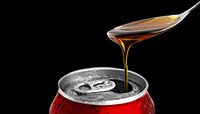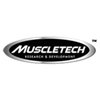The influence of testosterone (T) on skeletal muscle protein synthesis is mediated by the androgen receptor (AR). T binding to the AR converts the latter to a transcription factor; the T-AR complex then translocates to the nucleus and associates with DNA to regulate androgen-specific gene expression.1
Animal and clinical studies indicate that the AR signaling pathway is required for appropriate development of skeletal muscles, since it regulates increases in lean muscle mass, muscle strength, and muscle protein synthesis. The physiological importance of AR for muscle protein accretion has been demonstrated, as muscle hypertrophy is attenuated by AR blockade.2
Effects Of Exercise On AR
Several human and animal investigations have researched the physiological importance of the AR in exercise-induced muscle hypertrophy,1-8 emphasizing the importance of exercise at increasing the AR content,1-3,5,6 seemingly in a fiber-specific manner.4
Resistance exercise (RE), for instance, elicits a significant decrease in AR content in type-I slow oxidative, and a significant increase in type-IIb fast glycolytic fibers.4
Type-IIb fibers are those white fibers, also referred to as fast twitch B or fatigable fibers, that are most beneficial in sports such as sprinting. These fibers have low myoglobin content, few-mitochondria, and few blood capillaries, but contain a large amount of glycogen - these muscles primary source for energy during short, intense bursts in activity.

In untrained men, a single bout of heavy RE has been reported to up-regulate AR mRNA 48h post-training.3,6 Repeated RE bouts (each separated by 48h) instead, have been shown to increase AR mRNA and protein expression.3
Such augmentation correlated with elevated serum testosterone levels and corresponded to significant increases in myofibrillar protein.3 Testosterone is the primary hormone that interacts with skeletal muscle tissue, and when elevated leads to increased muscle growth.
In trained individuals, high-volume high-intensity RE appears to cause a significant decrease in AR protein content (-46%) at 1h post-exercise, probably due to protein catabolism induced by exercise-related stress.5
Such a negative effect, however, seems to be somewhat mitigated by post-RE feeding, which has been shown to increase muscle AR content, resulting in increased testosterone tissue uptake and enhanced luteinizing hormone (LH) - which also has been shown to elevate testosterone levels - release via feedback mechanisms.1 These observations provide a possible mechanism for increased protein synthesis following post-RE food intake.
Effects Of L-Carnitine-L-Tartrate Supplementation On AR
L-Carnitine-L-Tartrate (LCLT) supplementation has been evaluated in RE-trained humans as an enhancer of the hormonal responses to RE and a recovery promoter.1,9,10
3-weeks supplementation with LCLT (equivalent to 2 g elemental carnitine/day) has been shown to reduce muscle damage produced by an acute bout of high-intensity RE in two cross-over, placebo-controlled trials.9,10 - the "gold standard" so to speak in terms of clinical trials.
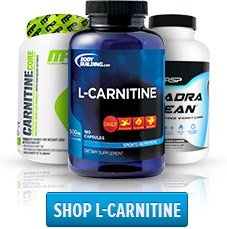
According to the investigators, less muscle damage may have resulted in more hormonal receptors available for binding interactions with anabolic hormones,9 a circumstance that may explain the reduced progression of muscle damage (measured by MRI) in the recovery days following RE.9,10 With more hormonal receptors available for binding interactions with anabolic hormones, muscle growth potential is also increased.
In particular, one study has shown that 21-days LCLT supplementation (equivalent to 2 g elemental carnitine/day) in recreationally resistance-trained individuals induced a significant upregulation of pre-exercise skeletal muscle AR protein content [15.2% more compared with PL (12.9+/-5.9 vs. 11.2+/-4.0 au, respectively)] compared with placebo.1
LCLT may have worked by reducing muscle damage associated with RE,9,10 therefore attenuating the catabolism of muscle-specific proteins (including AR).1
As a consequence, LCLT may enhance testosterone uptake via less muscle damage and increased availability of AR, and not via direct stimulation of T secretion (in other words, LCLT is not a testosterone-enhancing supplement).1
Based on these considerations, and on the fact that post-RE feeding stimulates increases in AR content (see above),1 it is possible that LCLT and feeding may independently and synergistically enhance the hormonal environment following RE and promote anabolism.
Conclusion
In summary, research shows that:
- Feeding after RE increased AR content, which may result in increased testosterone uptake, and thus enhanced luteinizing hormone secretion via feedback mechanisms.
- L-carnitine supplementation can upregulate AR content, which may promote increased testosterone uptake and recovery from RE.
In layman's terms, such increases in anabolic hormones and with recovery being enhanced you can expect more muscle growth.
References
- Kraemer, W.J., et al. Androgenic Responses to resistance exercise: Effects of feeding and L-Carnitine. Med Sci Sports Exerc 38(7): 1288-1296, 2006.
- Inoue, K., et al. Androgen receptor antagonist suppresses exercise-induced hypertrophy of skeletal muscle. Eur J Appl Physiol Occup Physiol 69(1): 88-91, 1994.
- Willoughby, D.S., and L. Taylor. Effects of sequential bouts of resistance exercise on androgen receptor expression. Med Sci Sports Exerc 36(9):1499-1506, 2004.
- Deschenes, M.R., et al. Endurance and resistance exercise induce muscle fiber type specific responses in androgen binding capacity. J Steroid Biochem Mol Biol 50(3-4): 175-179, 1994.
- Ratamess, N.A., et al. Androgen receptor content following heavy resistance exercise in men. J Steroid Biochem Mol Biol 93(1): 35-42, 2005.
- Bamman, M.M., et al. Mechanical load increases muscle IGF-I and androgen receptor mRNA concentrations in humans. Am J Physiol Endocrinol Metab 280(3): E383-390, 2001.
- Tchaikovsky, V.S., et al. The effect of exercises on the content and reception of the steroid hormones in rat skeletal muscles. J Steroid Biochem 24(1): 251-253, 1986.
- Lee, W.J., et al. Regulation of androgen receptor expression at the onset of functional overload in rat plantaris muscle. Am J Physiol Regul Integr Comp Physiol 285(5): R1076-R1085, 2003.
- Kraemer, W.J., et al. The Effects of L-Carnitine L-Tartrate supplementation on hormonal responses to resistance exercise and recovery. J Strength Cond Res 17(3): 455-462, 2003.
- Volek, J.S., et al. L-Carnitine L-Tartrate supplementation favorably affects markers of recovery from exercise stress. Am J Physiol Endocrinol Metab 282(2): E474-E482, 2002.
Recommended For You
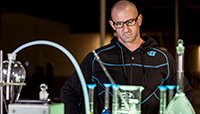
Your Expert Guide To L-Carnitine
Part fat-burner and part performance supplement, L-carnitine has a long history and plenty of fans. Look at the science and decide if it's right for you!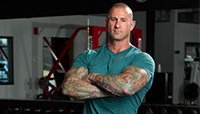
Ask The Supplement Guru: Is Carnitine Safe?
Its backers say carnitine offers powerful health and performance benefits. But a new study seemed to link it to heart disease. I'm here to separate the truth from the hype.